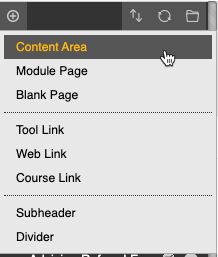Getting Ready
Can you see all of your courses?
Are all your assigned courses for the next semester listed in the Online Schedule and in Blackboard? If not, please verify with your department that you are assigned the course. If you have verified you are assigned to the course and you do have missing classes, please send the synonym(s) of the missing course(s) to dlstaff@austincc.edu.
Course Copy
Have you copied your course from the previous semester or previous year to each and every section of the course you plan to teach? See Copying Course Content for step-by-step instructions.
Course Syllabus
A special adaptation of the master syllabus template has been approved for use during the current pandemic crisis while campuses are closed to students. Note that addenda and other changes will be made as the situation evolves. Visit the Master Syllabus Checklist & Template for details.
Is your current syllabus available in the Course Schedule? If not, visit Lighthouse.
Update Your Course for the New Semester
Have you made the necessary modifications and updates to your courses? If you use due dates or have ‘start and end dates’ for different assignments, have you reset these dates? Double-check course content and references (videos, hyperlinks, etc.). Make sure any course activities are active and working (quizzes, discussion forums, etc.). Is your orientation exercise ready? Check out the Teaching & Learning Knowledge Base for articles about Blackboard.
Online Testing
Testing for courses will be online. Visit the Testing Guide to find detailed instructions and procedures for all the online testing options available at ACC.
Resources for Students
The Office of Distance & Alternative Education has various resources that you are welcome to add to your Blackboard course. Here are a few helpful links:
Area of Study Advisors for Distance Education
Advisors are available for distance education students at every stage of their education journey at ACC. DE students starting their educational program are recommended to visit with an ACC Area of Study Advisor to help them get started on the right track.
Online Tutoring
Online tutoring is now available for ACC students. Find more information on the Learning Labs website and Schedule an Online Tutoring Session.
Class in Session
Blackboard Opens
Your Blackboard course should already be available to your students online. Remember: Classes need to be updated before the first day of class.
Welcome/Getting Started Message
Consider a Welcome/Getting Started message through email or on Blackboard to engage students early.
This article was created and is maintained by the Office of Academic Technology.
If you need assistance incorporating this article in your course, please contact an Educational Technologist.








